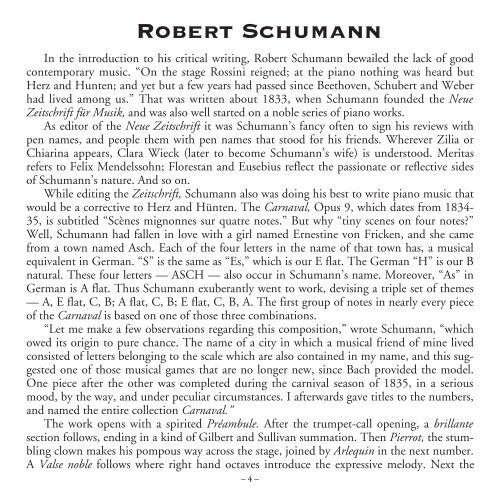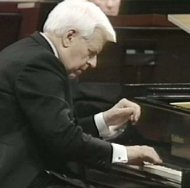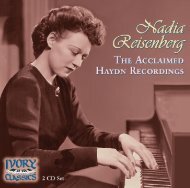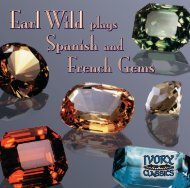Ruth Slenczynskaâ¢SCHUMANN Ruth Slenczynska ... - Ivory Classics
Ruth Slenczynskaâ¢SCHUMANN Ruth Slenczynska ... - Ivory Classics
Ruth Slenczynskaâ¢SCHUMANN Ruth Slenczynska ... - Ivory Classics
You also want an ePaper? Increase the reach of your titles
YUMPU automatically turns print PDFs into web optimized ePapers that Google loves.
Robert Schumann<br />
In the introduction to his critical writing, Robert Schumann bewailed the lack of good<br />
contemporary music. “On the stage Rossini reigned; at the piano nothing was heard but<br />
Herz and Hunten; and yet but a few years had passed since Beethoven, Schubert and Weber<br />
had lived among us.” That was written about 1833, when Schumann founded the Neue<br />
Zeitschrift für Musik, and was also well started on a noble series of piano works.<br />
As editor of the Neue Zeitschrift it was Schumann’s fancy often to sign his reviews with<br />
pen names, and people them with pen names that stood for his friends. Wherever Zilia or<br />
Chiarina appears, Clara Wieck (later to become Schumann’s wife) is understood. Meritas<br />
refers to Felix Mendelssohn; Florestan and Eusebius reflect the passionate or reflective sides<br />
of Schumann’s nature. And so on.<br />
While editing the Zeitschrift, Schumann also was doing his best to write piano music that<br />
would be a corrective to Herz and Hünten. The Carnaval, Opus 9, which dates from 1834-<br />
35, is subtitled “Scènes mignonnes sur quatre notes.” But why “tiny scenes on four notes?”<br />
Well, Schumann had fallen in love with a girl named Ernestine von Fricken, and she came<br />
from a town named Asch. Each of the four letters in the name of that town has, a musical<br />
equivalent in German. “S” is the same as “Es,” which is our E flat. The German “H” is our B<br />
natural. These four letters — ASCH — also occur in Schumann’s name. Moreover, “As” in<br />
German is A flat. Thus Schumann exuberantly went to work, devising a triple set of themes<br />
— A, E flat, C, B; A flat, C, B; E flat, C, B, A. The first group of notes in nearly every piece<br />
of the Carnaval is based on one of those three combinations.<br />
“Let me make a few observations regarding this composition,” wrote Schumann, “which<br />
owed its origin to pure chance. The name of a city in which a musical friend of mine lived<br />
consisted of letters belonging to the scale which are also contained in my name, and this suggested<br />
one of those musical games that are no longer new, since Bach provided the model.<br />
One piece after the other was completed during the carnival season of 1835, in a serious<br />
mood, by the way, and under peculiar circumstances. I afterwards gave titles to the numbers,<br />
and named the entire collection Carnaval.”<br />
The work opens with a spirited Préambule. After the trumpet-call opening, a brillante<br />
section follows, ending in a kind of Gilbert and Sullivan summation. Then Pierrot, the stumbling<br />
clown makes his pompous way across the stage, joined by Arlequin in the next number.<br />
A Valse noble follows where right hand octaves introduce the expressive melody. Next the<br />
– 4 –














